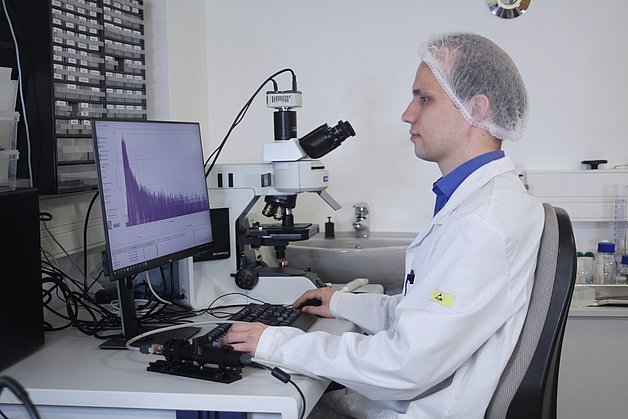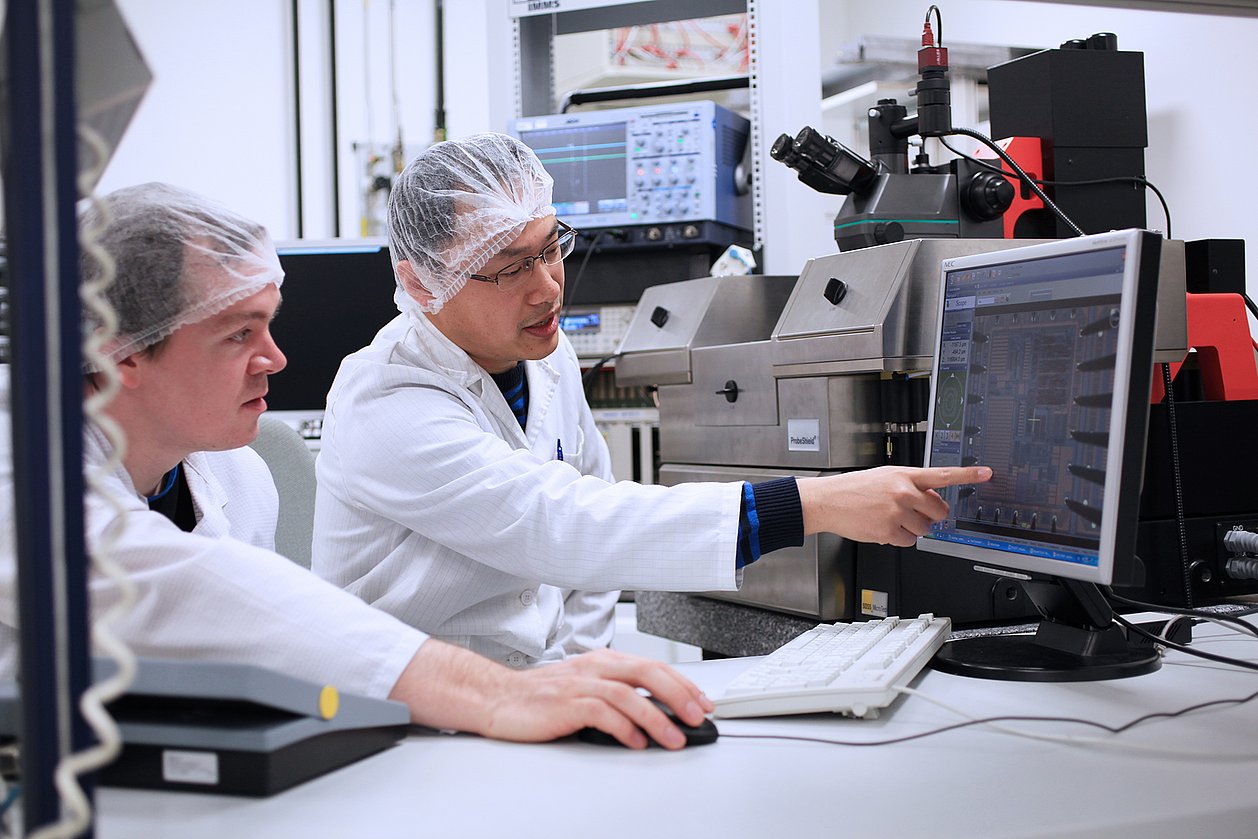Project FluoResYst
The IMMS is developing a SPAD-based sensor for time-resolved readout of fluorescence-labelled DNA microarrays.
Multi-drug resistance is an increasing problem in infectious diseases
According to the WHO, tuberculosis is the second deadliest infectious disease worldwide after COVID-19. To counter the multi-resistance of tuberculosis bacteria, which is becoming more and more prevalent against antibiotics, suspected cases have to be tested daily and, in case of a positive laboratory result, treated and isolated quickly. As a rule, however, the necessary laboratory infrastructure and logistics are lacking, because 95 per cent of tuberculosis cases occur in developing and emerging countries.
Combination of two innovations leads to a new detection technology
The overall goal of FluoResYst is to develop a rapid point-of-care detection system for multidrug resistance that can help to contain epidemics by accelerating on-site diagnostics outside of laboratories. The combination of photonic integration of time-resolved fluorescence measurement for short-lived fluorochromes and the biochemical fluorescence quenching antibody assay is expected to greatly simplify complex analyses that were previously difficult to access and thus make them widely available.
IMMS develops time-resolving detector chip with SPADs
In the technological part, a photonic platform is being developed for this purpose, which is to enable tuberculosis diagnostics outside a laboratory environment through a high degree of integration. The principle of the detection platform is based on time-resolved fluorescence measurement, with which complex optics and wavelength filters can be largely avoided. This is made possible by the use of a very fast excitation laser and a fast CMOS-integrated detector.
In the project, IMMS is developing this detector chip for reading out DNA microarrays. In addition to several arrays of single-photon avalanche diodes (SPADs), the chip also contains the histogram generators required for their evaluation. By the use of through-silicon vias (TSVs), the chip with its planar surface can be integrated very well into microfluidic systems. In addition to the SPADs, classical photodiodes are also distributed and evaluated in the chip, which relaxes the requirements for the homogeneity of the optical excitation and further reduces the device complexity.
Acronym / Name:
FluoResYst / Time-resolved fluorescence detection for integrated multiparameter analysis of multidrug resistance exemplary in tuberculosisDuration:2021 – 2025
Application:
Life Sciences|time-resolved fluorescence measurement| in-vitro diagnostics| microfluidicsResearch field:Integrated sensor systems
Related content
Reference
Dr. Christof Steiner, DITABIS AG
IMMS can do much more than ‘just’ chip development – especially in the field of photonics and sensor technology. What we particularly liked: The IMMS team quickly and flexibly integrated itself into our network of DITABIS developers and external partners – with lots of ideas and a genuine team spirit.
Reference
Dr. Heiner Flocke, iC-Haus GmbH
”By sharing expertise and resources, we were able to jointly develop a solution that met and even exceeded the requirements.“
Press release,
Silicon Science Award geht an Nachwuchsforscher von IMMS und TU Ilmenau
Arbeit zu zeitkorrelierter Einzelphotonenzählung für Messungen im Pikosekundenbereich ausgezeichnet

Press release,
Rapid detection system for multi-resistances in tuberculosis infections
Eight partners from research and industry launch BMBF FluoResYst project
Contact
Contact
Eric Schäfer, M. Sc.
Head of Microelectronics / Branch Office Erfurt
eric.schaefer(at)imms.de+49 (0) 361 663 25 35
Eric Schäfer and his team research Integrated sensor systems, especially CMOS-based biosensors, ULP sensor systems and AI-based design and test automation. The results are being incorporated into research on the lead applications Sensor systems for in-vitro diagnostics and RFID sensor technology. It will assist you with services for the development of Integrated circuits and with IC design methods.
Funding
The FluoResYst project is funded by the Federal Ministry of Research, Technology and Space (BMFTR) within the photonics research funding framework under the reference 13N15807.











